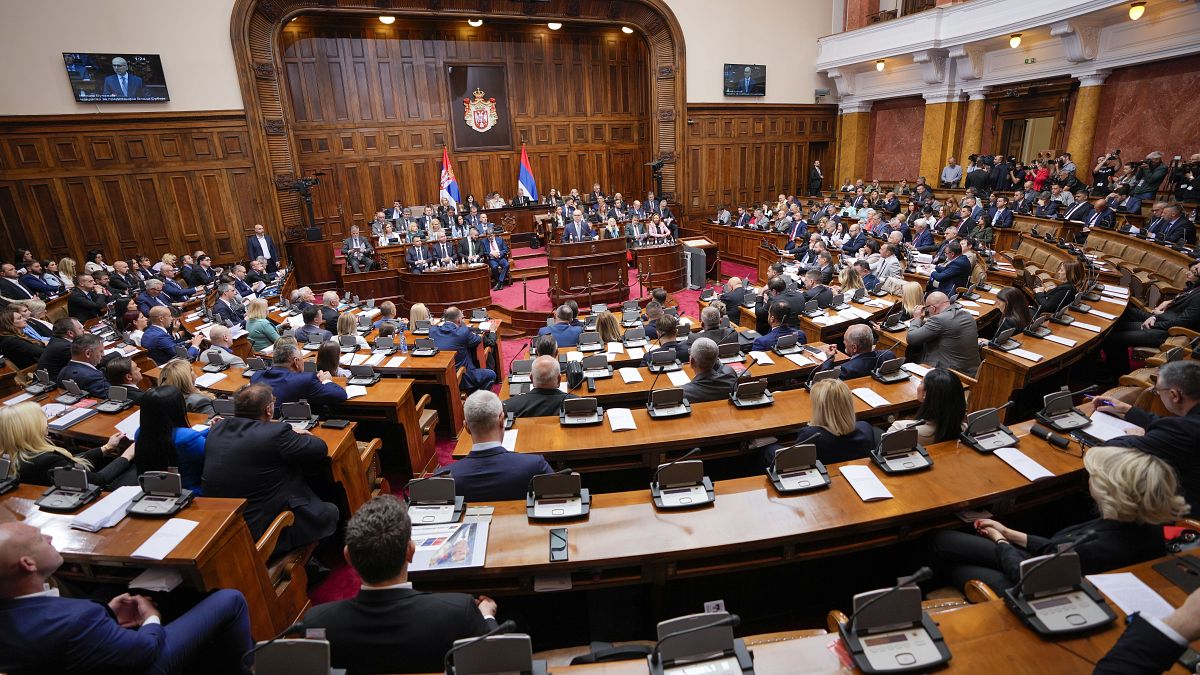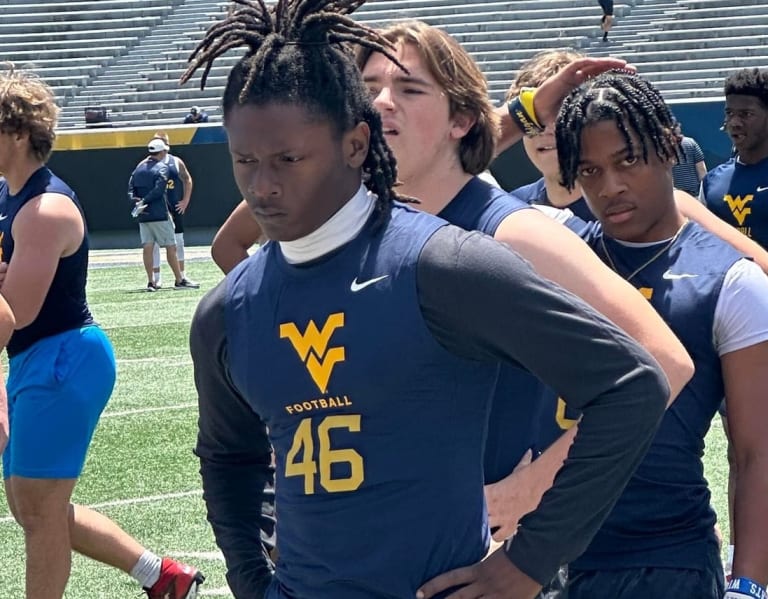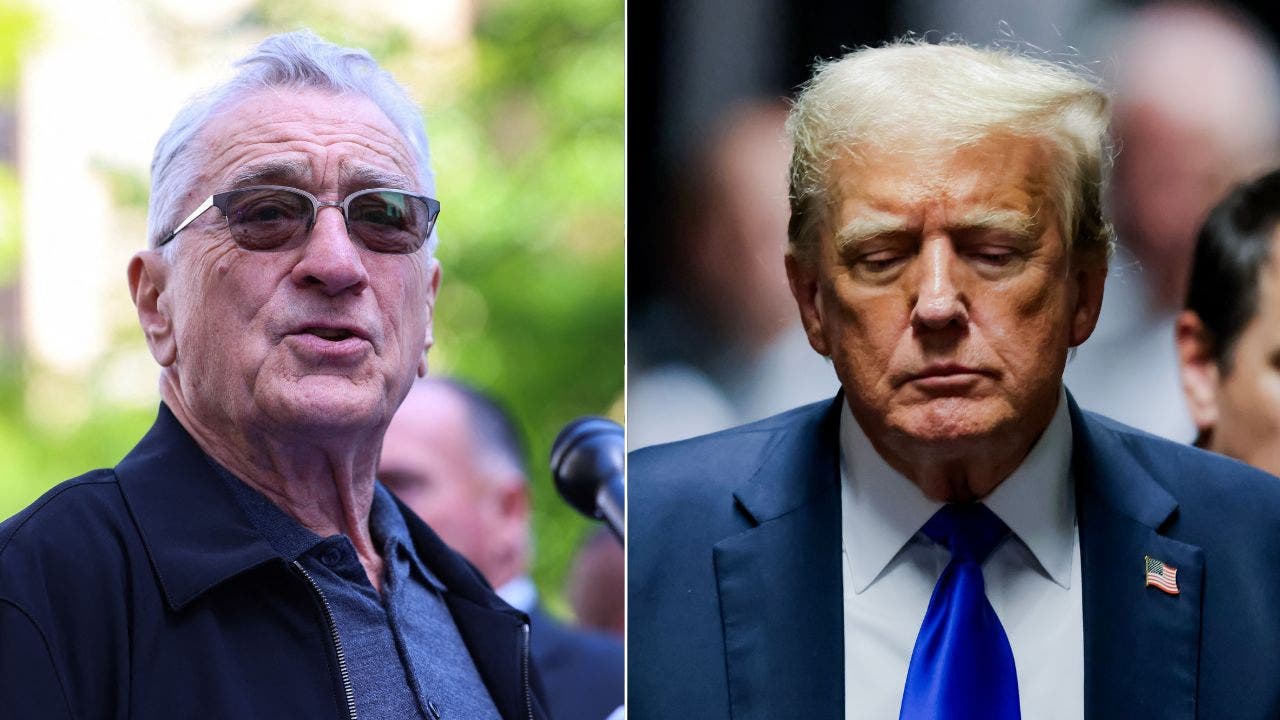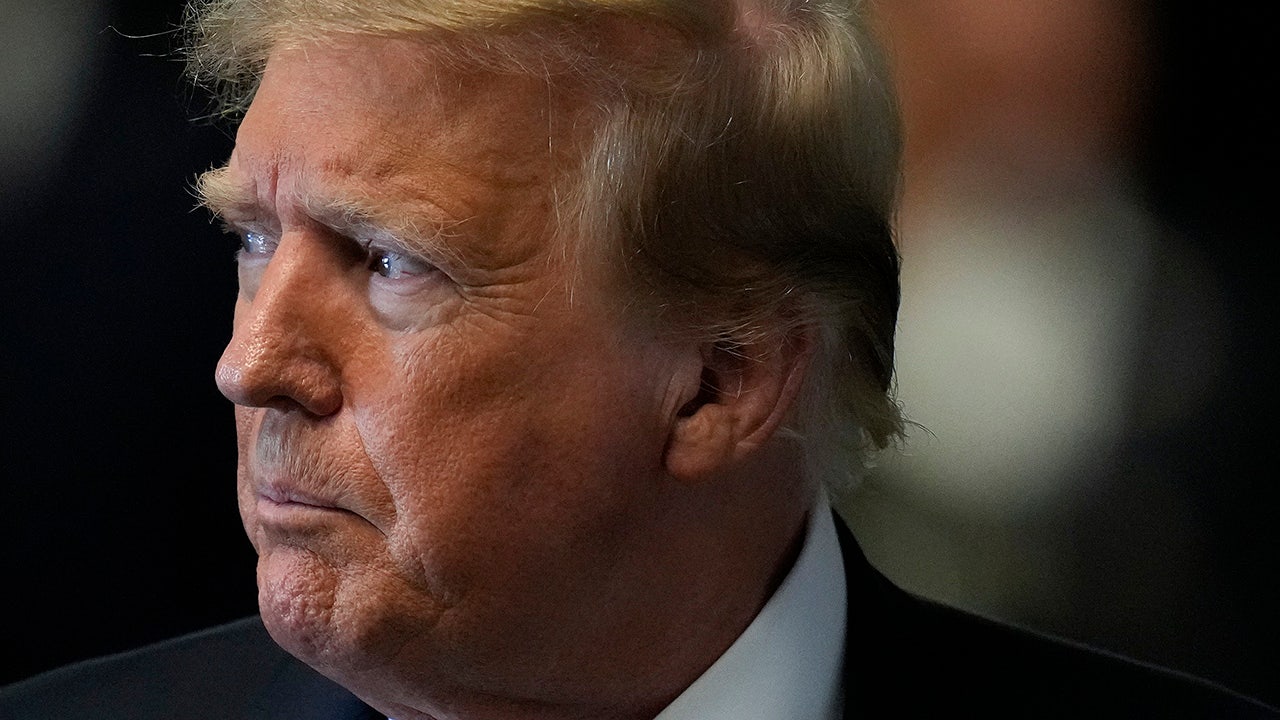Culture
Be Like Mike! Knicks' Jalen Brunson is shredding postseason defenses

This was Jalen Brunson’s moment. Donte DiVincenzo would make sure of that.
The two New York Knicks sat in front of reporters following Brunson’s Game 1 blowup against the Indiana Pacers, a 43-point performance that has become run of the mill for the All-Star point guard. These days, a Brunson scoring outburst is about as rare as a Tom Thibodeau broken blood vessel.
Brunson has now gone for 40 points in four consecutive playoff games. The only other players in league history to accomplish the same feat are Jerry West, who had a six-game streak, Michael Jordan (four) and Bernard King (four).
As a reporter listed off Brunson’s impressive company, DiVincenzo noted one standout and interrupted.
“Michael Jordan,” he said excitedly, turning to Brunson as a wide smile overpowered his cheeks.
Brunson looked at his buddy as if DiVincenzo were teasing him about a 0 of 20 dud.
“If you know my friends,” Brunson said the next day, “You should know that they’re all a——-. … Usually, they’re all sarcastic and so I just tried to stop him before he kept going.”
The best of friends show kindness only behind each other’s backs. And behind Brunson’s is a shrine of accomplishments that is exciting DiVincenzo more by the second.
Brunson is the first player in NBA history with 40 points and five assists in four consecutive playoff games. He’s just the second guy ever, behind only West, with five straight playoff games of 39-plus.
He’s averaging 36.6 points during the postseason, which leads the NBA, to go with 8.6 assists. The only player to have those numbers for a postseason run was Russell Westbrook, who did it in 2016-17 on far less efficient shooting and in only five games, four of which his team lost.
“I’m so proud of him, just knowing what type of person he is,” DiVincenzo said of Brunson. “He doesn’t take praise and accolades and all that stuff. He doesn’t take it well. He’s always trying to get better. He always knows there’s going to be more doubters, more things to improve on. That’s his beauty as a person.”
The Pacers, who trail the Knicks 1-0 in their second-round series, are witnessing the basketball beauty.
Indiana tossed various defenders at Brunson in Game 1, a 121-117 New York victory. The long, physical Aaron Nesmith manned him to start. Andrew Nembhard, a hard-nosed guard, took over later. Point guard TJ McConnell, who Josh Hart so affectionately referred to as “an annoying little s—” earlier this week, squared up Brunson, as well.
None of it led to much success.
Brunson’s 43 points came on 14-of-26 shooting; he sank all 14 of his free throws. The Pacers were one of the worst fouling culprits during the regular season. It showed.
These are the types of shots the Knicks can expect from Brunson in this series. Indiana’s defenders notoriously stick to potential shooters who line the perimeter. It prevents 3-point attempts, which the Pacers rarely give up. And it funnels drivers into center Myles Turner, one of the league’s premier rim protectors. But it also leaves the middle open.
No one allowed more shots in the paint during the regular season than Indiana did. The trend continued into Game 1, including for Brunson. Fifteen of his shots were inside the paint, many of them in the floater range that Brunson can feast from while neutralizing Turner’s shot-blocking.
Brunson may have gotten hot during the previous series when the Knicks downed the Philadelphia 76ers in six games, but it wasn’t because Philly gave him the middle.
The Sixers surrounded him with long defenders, many of whom collapsed onto him whenever he neared the hoop. Eventually, he figured it out, going for 39 points in Game 3, 47 in Game 4, 40 in Game 5 and 41 in the clinching Game 6.
Few people have reached these numbers — not that Brunson would boast about himself any more than his friends would to his face.
“I understand what’s going on, so it’s definitely obviously pretty cool, and it makes it better to know that it comes off a win most importantly, but honestly no matter what the situation was, whether it was positive or negative, I have to come back and be better,” Brunson said. “Last series, the first two games I was awful, and for me, I do have to be better, so I have to put that in the back of my mind. This is the same thing.”
The Pacers trapped Brunson in moments, but he got rid of the ball quickly. They full-court pressured him, which the Knicks expected, especially since Indiana did the same against the Milwaukee Bucks in Round 1. The strategy is an attempt to tire out Brunson while also bogging down the Knicks offense. If it takes New York a few extra seconds to get into its first action, it won’t be as likely to score.
Yet, Brunson picking apart the Pacers in Game 1 wasn’t despite his team’s success.
The Knicks shot 53.7 percent from the field and 11 of 23 from 3. They dropped 121 points on only 98 possessions, an elite figure.
“The thing that’s impressive, it’s always within the context of winning and his teammates and that’s always the most important thing to him,” Thibodeau said. “And I love his mentality because his mentality is that he’s not satisfied.”
And now, he’s showing up on lists with Michael Jordan — even if he won’t acknowledge the accomplishment and even if he worries his friends will use it as pure jeer fuel.
“He knows what he’s doing but he doesn’t address it. He’s just trying to get better every single day,” DiVincenzo said. “Not being him and looking on the outside, I love it. I sure as hell love it. I will celebrate every day of the week. That’s who he is as a person, not just a basketball player.”
(Top photo: Sarah Stier / Getty Images)

Culture
Bill Walton was unique in media and life, with a message we all understood

They are all the same, even though Bill Walton was one of the most unique men to ever live. Walton was a 6-foot-11 redhead, curiosity seeker, Grateful Dead fan and TV analyst, who just happened to be one of the greatest basketball players to ever live.
But upon his death Monday, the tributes were all the same because the thread of Walton’s life was his tie-dyed passion for people. At times, he might have seemed as if he lived on another planet, but he wanted you and everybody else to join him on it because it was a place where love and dreams come true.
That is why the tributes were all the same on social media, summed up succinctly by the legendary Julius Erving.
“Bill Walton enjoyed life in every way,” Erving said in a statement posted to X.
But you didn’t need to be a fellow Hall of Famer like Dr. J to know Walton. For decades, Walton has been a part of basketball fans’ lives as a TV commentator.
As a center, Walton reached the highest heights leading UCLA and the Portland Trail Blazers to championships before being a sixth man — “Larry Bird’s valet,” as Walton put it — on the Boston Celtics and thriving as a role player for another ring. His importance on the floor changed, but his attitude did not.
GO DEEPER
Bill Walton, one of basketball’s most eccentric characters, dies at 71
As a broadcaster, he had that same ride, teaming up with fellow NBC analyst Steve Jones and Tom Hammond on top crews.
In 2002, Walton worked the NBA Finals with Marv Albert for NBC. In 2003, on ABC, he was paired with play-by-player Brad Nessler and co-analyst Tom Tolbert for the Finals.
However, these aren’t the broadcasts that will live on in our memories of Walton. It was when Walton was more of a sixth man that he stood out to a greater degree; especially in the social media age.
His work on ESPN, late night on his beloved Pac-12, teaming with Dave Pasch or Jason Benetti really represented the groovy Walton experience.
That is why, upon his passing, social media played clips of Walton being Walton, comparing the San Antonio Spurs’ Boris Diaw to Beethoven or eating a lit cupcake or talking about actual Bears and Huskies when describing UCLA going out to an early lead on Washington.
RIP Bill Walton, who 14 years ago spoke about Boris Diaw (career 8.4 ppg/4.4 rebs/3.5 ast) with more beauty and reverence than anyone has ever spoken about another person.
“When I think of Boris Diaw, I think of Beethoven and the age of the romantics.” pic.twitter.com/wSN5eVyOae
— Blake Wexler 🫵 (@BlakeWexler) May 27, 2024
Bill Walton lived his life without fear.
Like when he ate a cupcake live on TV with the candle still lit.
RIP to a college basketball icon. pic.twitter.com/fDWcRGajTp
— Ben Stevens (@BenScottStevens) May 27, 2024
Bill Walton forever pic.twitter.com/doTKjhJcSd
— Zach Harper (@talkhoops) May 27, 2024
Benetti took to social media to share an email he received from Walton four years ago:
“PUT THE MUSIC ON,
as soon as it doesn’t seem right,
change the music/station,
but don’t turn it off”
In 1981, Walton did his version of changing the music. That year, he addressed a stuttering problem that had plagued his life and makes his accomplishment as a broadcaster even more impressive.
Until Walton was almost 30, he was afraid to speak. At that time, Walton met the legendary broadcaster and Olympian Marty Glickman. Glickman advised Walton that talking was a skill, not a talent, and he could apply the lessons of the court to improve, basically to keep it simple and practice.
“When I was 28, a chance encounter at a social event with Hall of Fame broadcaster Marty Glickman completely changed my life in so many ways that things have never been the same since, nor have they ever been better,” Walton wrote in an essay for The Stuttering Foundation.
Basketball fans were better for it. Most people alive now did not see Walton play in his prime, but they have listened to his views on life. It was authentic, on or off the TV.
“Bill would often end text messages with ‘Thank you for my life. Shine on. Peace and love,’” ESPN president of content, Burke Magnus, said on X.
That was his message. Everyone got it. For all of his accomplishments, what a great legacy.
(Photo of Bill Walton at the 2019 Maui Inivitational: Mitchell Layton / Getty Images)
Culture
Michael Jordan and Woody Harrelson: Tales from the Kenny Rogers Classic Weekend

Kenny Rogers, the white in his beard matching the color of his jersey, took the pass at the left elbow. The famous country singer, playing on his home court at his farm near Athens, Ga., squared and looked at the basket. He saw what was coming.
A 25-year-old Michael Jordan leaped to block the shot, his right hand extended high. Rogers pulled back. “A fake!” famed broadcaster Chick Hearn said on the telecast. “Kenny Rogers puts Jordan in the popcorn machine.” Rogers took a step to his left and swished a 21-foot jumper.
The Gambler had just roasted MJ.
The crowd erupted. Rogers smiled. Teammate Dominique Wilkins rushed over to slap five. Thirty-six years later, this remains the most popular highlight from an event seldom duplicated.
For three years, Rogers hosted the “Kenny Rogers Classic Weekend” at Beaver Dam Farms. He invited 15 sports stars and television celebrities for a weekend competition of basketball, golf, tennis and bass fishing. And NBC televised it.
Jordan was there. Larry Bird was there. Julius Erving, Isiah Thomas and Charles Barkley participated at different times. Tennis legends John McEnroe and Jimmy Connors. Golf pros Raymond Floyd and Payne Stewart. Actors Mark Harmon and James Caan, as well as R&B and soul singer Smokey Robinson.
In 1989, Woody Harrelson, who played the affable bartender on the sitcom “Cheers,” skipped the Emmy’s — when he was nominated for best supporting actor in a comedy series (and won!) — to attend the Rogers event.
“There wasn’t a lot of thought that went into it,” Harrelson said at the time. “I wanted to play some hoops with my boys.”
Part of it was the setup. This was a first-class event with big sponsors. Rogers sent a helicopter to pick up the stars from the Atlanta airport. Everyone stayed on his 1,200-acre ranch, which featured an 18-hole golf course, two clay tennis courts and several stocked lakes.
Kenny Rogers with Isiah Thomas, Dominique Wilkins, Larry Bird and Michael Jordan. (Courtesy of Kelly Junkermann)
And part of it was the camaraderie. A chance to hang with stars from different arenas. After competing during the day, everyone hung out at night. Rogers had a sit-down dinner. He performed. Robinson performed. Dolly Parton and Gladys Knight came in and performed. One year, Harrelson got on stage and sang “Jailhouse Rock.” McEnroe jammed on the guitar.
Pro athletes are used to big events. This was different.
“One morning I went up to Kenny’s house for breakfast and it was me, Michael Jordan and Smokey Robinson sitting there eating breakfast together,’’ golfer Tim Simpson said. “And I’m like, ‘This is pretty damn cool right here.’ ”
“One night, we went out to the golf range at 2 a.m. and watched Jerry Pate hit golf balls off beer bottles,” said tennis pro Mikael Pernfors, referring to the golfer who won the 1976 U.S. Open. “He cleaned those babies like you wouldn’t believe. There was not a bottle broken until the rest of us tried.”
Harrelson made a putt to clinch a victory for his team and called it “the single most exciting event in my entire life.”
Bird was no-nonsense, always intense. Or maybe annoyed. It was hard to tell.
“I had just won the British Open and I kind of thought I was a little bit of a big deal,” golfer Mark Calcavecchia said. “I was in the kitchen looking in the refrigerator for something to eat and Larry Bird walked around the corner. I’m a big fan of his. I said, ‘Hey, Larry. Mark Calcavecchia.’ He goes, ‘Yeah, whatever,’ and kind of pushed me out of the way. That was my first introduction to Larry Bird.”
And, of course, everyone was in awe of Jordan, not just for what he did in the basketball competition but also in the other sports (and the side bets he made with Barkley). MJ was just entering his prime.
“That was one of the cooler events I’ve done just because of the type of event it was,” said Wilkins, the nine-time NBA All-Star and basketball Hall of Famer. “To be there with stars in different professions, that was cool because you never saw anything like that. It was special.”
The idea sprouted not long after Rogers had moved from Southern California to Georgia. In addition to his singing and acting careers, Rogers, who died four years ago at 81, also had been a sports nut.
Rogers was so serious about tennis that he had a pro named Kelly Junkermann travel with him while he was on tour. At each stop, he and Junkermann would visit a club and play doubles against the club pro and his assistant. Eight times out of 10 they would win.
Rogers also enjoyed golf and called himself “obsessive-compulsive.” Once he tried something, he couldn’t stop until reaching a respectable level. At Beaver Dam Farms, he had an 18-hole golf course built, making it as difficult as possible.
One day, Rogers asked Junkermann: “How well do you think a professional golfer would enjoy this course?”
“I don’t know,” Junkermann said, a scene captured in Rogers’ memoir, “Luck or Something Like It.”
Junkermann suggested having a “Gambler’s Invitational,” similar to what they had done when Rogers had lived in Beverly Hills.
For that tennis tournament event, Rogers invited talk show host Johnny Carson, who lived three houses down, musician/singer Lionel Richie, game-show host Bert Convy, actor Robert Duvall and former Olympian Bruce Jenner, along with their accompanying pros. Each person put up $500 in a winner-take-all format.
Junkermann said they could expand the concept at Beaver Dam Farms.
“Remember when we were all kids?” Junkermann said. “Every kid was good at something, right? One kid was good at basketball. One kid was good at tennis. One kid became a singer. So, I said, ‘What we’ll do, we’ll all be kids. But everybody has to play everybody else’s sport.’ ”
Let’s do it, Rogers said.
Steve Wynn, the casino mogul, put up $500,000. Prize money was set at $400,000. Ticket prices ranged from $40 to $75 with proceeds going to the construction of a homeless shelter.
Junkermann said the first call went to Jordan, hoping the golf aspect would appeal to him.
“Back then you could call an athlete and have an athlete call you back,” Junkermann said.
Jordan said he was in. The next call went to McEnroe. He said he was in. Bird, a big Rogers fan, said he would come.
“You know the only guy we didn’t get?” Junkermann said. “We had the big three, right? We had Jordan. We had Bird. We had Isiah Thomas, who had just won the NBA title. It was Magic (Johnson). Magic was the one guy — he was like too big.”
Once the stars and celebs arrived at Rogers’ ranch, they were floored. Beaver Dam Farms was incredible.
“I was absolutely gobsmacked,’’ tennis pro Kevin Curren said. “Kenny was obviously making a lot of money in those days. The place that we stayed, we thought it was a spectacular home. They said, ‘No, no. That’s just one of like three or four places on the estate.’ And the fact that he had this horse barn that was for very high-end horses, and he could put a basketball floor and the whole thing in there with stands, it was phenomenal.”
Especially the golf course.
“The first tee, when you stepped out of Kenny’s kitchen door, I mean, literally right beside his table, when you stepped out his door you stepped onto the first tee,’’ Simpson said. “I’m like, ‘Kenny, you could not have made this any more convenient.’ ’’

A poster for Kenny Rogers’ 1989 event. (Courtesy of Kelly Junkermann)
Before the competitions began, the athletes and celebs — the 15 invitees along with Rogers — were divided into four teams. Outside of bass fishing, the other three sports were set up so that the star in that sport could not dominate. For example, in basketball, the pros could score only 12 points in a game to 22.
On the basketball court, tennis pro Roscoe Tanner was matched up against Calcavecchia. Tanner relaxed and thought: “He’s a golfer. I can handle this.”
But then the ball moved and the tennis pro found himself matched against Bird.
“He looks down at me and starts laughing,” said Tanner, who won the 1977 Australian Open. “I felt like a little kid guarding their dad.”
Tanner played off the Celtics legend and dared him to shoot.
“No, no. I’m waiting for you,” Bird said.
So Tanner rushed out, grabbed Bird’s gym shorts and said: “If you shoot, your shorts are coming down.”
“Not a problem,’’ Bird said.
“He stood dead still,” Tanner said. “Shot a 3-pointer, made it and looked at me like, ‘What an idiot.’ ’’
McEnroe, the tennis Hall of Famer, grew up in New York. He could hoop. Harrelson had game. Calcavecchia and fellow golfer Lanny Wadkins weren’t bad. Most everyone else was just trying to survive against NBA stars. It wasn’t easy.
Calcavecchia thought he would set a screen on Jordan — a legit basketball play. Jordan responded with an elbow to the golfer’s abdomen. “Right where it knocks the wind out of you,” Calcavecchia said. “On the old VHS I had of (the event), you could hear me go ‘WHOOYA,’ right when he elbowed me. The whole crowd heard it. I could barely move after that.”
“They took it pretty seriously,’’ said former University of Georgia basketball coach Hugh Durham, who officiated the basketball games. “Michael drove in one time and he says, ‘That guy fouled me.’ I said, ‘You’re the best player in the world. Just think what that guy’s got to think for the rest of his life.’ And Michael said, ‘We’re playing for a lot of money!’ ’’
On the tennis court, Jordan made up for his inexperience with athletic ability. (And confidence. One year, Curren, the tennis pro, remembered Jordan and Barkley arguing over who was the better athlete. They decided to play a set of tennis for $10,000. Jordan won easily.)
“It was the absolute dream to play basketball with Jordan, and then I played tennis with him,” said Curren, who won doubles titles at Wimbledon and the U.S. Open. “That was even more fascinating to witness his movement on the court.
“As a tennis player, you can see when a shot is hit, before it’s hit, how it’s developing. They would do a drop shot and I would have like a two-step start on him. Next thing I would see this guy coming past me and his steps are like three times the size of my steps.”
The only place Jordan’s explosiveness didn’t translate — the fishing competition. Each team had a bass boat along with a fishing guide. Jordan had no interest. The water made him nervous. However, golfer Raymond Floyd put the basketball star’s mind at ease.
“Michael, if you fall overboard, just stand up,’’ he said. “It’s only 5-feet deep. You’ll be fine.”
As it turned out, Jordan caught the biggest bass his first year, which netted him $5,000. According to Rogers’ memoir, the world’s greatest basketball player offered Floyd half of the prize money to take the fish off the hook.
The 1989 event came down to Harrelson. Instead of attending the 41st Primetime Emmy Awards, the “Cheers” star stood over a 5-foot putt, needing to sink it to give his team, which included Jordan, the event championship.
Through the years, the Rogers weekend featured light moments. In his memoir, Rogers wrote about shooting dice with Thomas and losing $1,000 in about three minutes. Simpson said his 8-year-old son Chris slipped a frog inside the pocket of Barkley’s workout pants.
“And I tell you what, Charles lost it,” Simpson said. “I mean, you would’ve thought he put a rattlesnake in his pocket. It was hilarious.”
One year, Tanner missed a putt, costing his team $10,000, and then-wife Charlotte stormed over and hurled his putter into a nearby lake.
But this was serious.
Simpson watched Harrelson line up the putt. It was all wrong.
“He’s lining up a foot and a half to the right, and it’s a dead straight putt,’’ Simpson said. “And I said, ‘Ho, ho, ho.’ I squatted down behind him and said, ‘I’m going to line up the putter’. And it was just like the movie “Caddyshack.” Larry Bird and my buddy Payne Stewart are over there saying, ‘Miss it! Miss it! Miss it!’ I told Woody: ‘Now take one look and hit it.’ ”
With his blue hat pulled backward, Harrelson holed the putt. He raised his arms and yelled. Jordan, Calcavecchia and Curren rushed over and embraced him.
“They’re jumping around like they had just won the NBA championship,” Junkermann said.
To this day, Simpson has a photo of the Harrelson putt displayed in his basement. Curren still has the miniature trophies he won. Tanner said it was one of the best weekends he’s ever had. Which begs the question: Could something like this happen today?
Celebrity golf tournaments are common, but events like the Rogers Weekend are not. Years ago, Junkermann considered a similar event with country star Garth Brooks but the idea didn’t get far. Without Beaver Dam Farms, which Rogers sold in 2003, location was an issue.
“Yeah, there’s probably no way,’’ Wadkins said. “The money has gone up so high. They probably wouldn’t do something like this and in a lot of ways jeopardize their career by doing something out of the norm for a pretty small amount of money compared to what people get paid today.”
Others disagree.
“Basketball players, I know they have contracts and things that kind of prohibit them from doing things where they might get hurt,” Calcavecchia said. “But a little half-court game and golf, fishing and tennis, the odds of getting hurt are pretty slim, quite honestly. Basketball’s probably the most risky of the four. But you could even throw bowling in there. I know (basketball star) Chris Paul loves to bowl and he has a celebrity tournament.”
Maybe someday everything will line up again. The timing. The host. The celebs. The location. Until then, the Rogers event will live on through memories.
“It was a blast,” Wadkins said. “It really was. Just a one-of-a-kind thing.”
(Photo illustration: Dan Goldfarb / The Athletic; photos courtesy Kelly Junkermann)
Culture
'You know my name. It’s impossible. I made it': Gael Monfils has no regrets

In 2004, the four boys’ Grand Slam titles were split between two 17-year-olds.
Three went to the one considered the most talented, the final one to probably the next best player — who, even then, was not prepared to accept being second-best.
The first went on to have a very good career: a regular in the world’s top 20, peaking at No 6, with two Grand Slam semi-finals. The second player, the inferior junior, had an outstanding career: three major titles, two Olympic golds, a Davis Cup win, the world No 1 ranking. He did it by maximising every last drop of his talent, while the other player was seen as not quite realising his potential.
Twenty years on from those junior triumphs, both are nearing the end of their careers. The more successful player is eight months younger but closer to retirement — seven years battling injury have pushed his body to its absolute outer limits.
The other player is enjoying a late renaissance, having battled injuries of his own for a couple of years, but now ranked 37 at age 37, the oldest player inside the world’s top 50. Loved for his showmanship and shotmaking ability, he is also one of the biggest draws for crowds wherever he goes — especially at Roland Garros, in his home city of Paris.
For a few hours on Monday night, Gael Monfils again delighted Court Philippe-Chatrier in the prime night session slot. It wasn’t just that he beat Brazilian 24-year-old Thiago Seyboth Wild in four sets, it was also the way he did it, a cavalcade of running forehand passing shots, jumping backhand volleys, and interactions with the crowd.
Twenty-four hours earlier, his erstwhile junior rival — Andy Murray — entered the same court to face Stan Wawrinka. Murray, back from his latest battle with injury, competed gamely for a couple of sets but succumbed 6-4, 6-4, 6-2. It’s expected to be his last French Open.
Monfils playing against Murray during the first round of Roland Garros in 2006 (Eric Feferberg/AFP via Getty Images)
For a long time, Murray could be used as a stick to beat Monfils with; the contemporary who showed what could be done with extra application. Over time, though, that comparison has become facile. The idea that Monfils doesn’t properly apply himself is fatuous — he’s got 12 titles of his own — and their divergent careers stand on their own terms.
Murray, defined by dedication levels that would make most mere mortals wince, managed to infiltrate the top of men’s tennis at its contemporary peak and stay there. Monfils, without the promised major titles, is still one of the most popular players on the tour, packing out stadiums across the world. No wonder, when he does things like this…
HE SWITCHED HANDS WITH THE VOLLEY 😱@Gael_Monfils goes left-handed!#RolexMonteCarloMasters pic.twitter.com/PWRFcPK3Oh
— Tennis TV (@TennisTV) April 10, 2024
Monfils certainly has no regrets.
“Impossible,” he said to The Athletic in a conversation on the eve of the tournament.
“So many people forget where I’m from, who I am. No one knows me. Who I am now, I couldn’t even predict this for a second. I’m one of the luckiest people to have made it. This career, I never expected it. My mum’s a nurse — working night shifts to try to help me play tennis. My dad worked in telecoms back then because he was a soccer player but had to stop quite early.
“Living in not the best area of Paris, I had this dream. And now here I am, talking to you. You know my name. It’s impossible. I made it.”
Back when Monfils was the all-conquering junior, Murray was asked at Wimbledon in 2004 whether the Frenchman was the boys’ equivalent of Roger Federer.
“No, I don’t think so,” a 17-year-old Murray said, with a soon-to-become customary contrarianism.
“He’s done really well, winning in Australia and the French. But last week, I had a tight match with him, and he struggled through his match today. I beat him last year at the French Open 6-4, 6-1. So he is beatable.”
Monfils won that year’s junior Wimbledon, but Murray got on the board by winning the U.S. Open. Monfils’ hopes of becoming only the second player — after Stefan Edberg in 1983 — to complete a calendar boys’ Grand Slam ended in the third round at Flushing Meadows.

Monfils after winning junior Wimbledon against Britain’s Miles Kasiri (Phil Cole/Getty Images)
This might all feel like ancient history now, but the pair go even further back. “It’s crazy because I played Andy the first time when I was 11 and he was 10,” Monfils recalls.
Monfils made the jump into the pro circuit before Murray and reached the second round of the 2005 Australian Open. Both he and Murray made the third round of that year’s Wimbledon, and Monfils was named the ATP newcomer of the year at the end of the season.
The pair’s paths crossed again the following year, when they met in the first round of the French Open. Monfils won in five sets, avenging a win for Murray in their first meeting on the pro tour, in Hamburg.
Surprisingly, the pair have only met six times on the main tour, Murray leading the head-to-head 4-2. Their most recent meeting at that level was a decade ago, as close to their dominant junior days as now. The match, a French Open quarter-final, could be seen as the early part of their careers in microcosm, with Murray toughing it out to win in five sets.
Before that match, Murray said: “He’s a great athlete — maybe the best we have had in tennis. Of the Grand Slams, he’s played his best tennis here by far. He loves playing in front of a big crowd. Gael has always been a great entertainer and he’s great for the sport.”
Murray was, by this point, a two-time Grand Slam champion, and Monfils hadn’t been to the semis of a major since the French Open in 2008. Monfils did reach another semi-final, at the U.S. Open in 2016, but Novak Djokovic beat him in a bizarre match defined by the Serb ripping his shirt open, a topsy-turvy scoreline, and heat and humidity so intense that it appeared to addle both players.
That’s still the furthest Monfils has gone at a Grand Slam, but in the eight years since, he has reached two major quarter-finals (one at the 2022 Australian Open, aged 35) and has won six more titles to double his career total. None has come at Masters (1000) level.
Murray has 14 of those, on top of all his other significant successes.

Monfils and Murray after that Roland Garros quarter-final (Kenzo Triboillaurd/AFP via Getty Images)
“Everybody’s different,” Monfils says of his one-time junior rival. “We have a different purpose. I’m a big fan of Andy. His achievements, his career, the guy he is. He is a really respectful guy and a cool dude. A legend of the sport.
“I never judge anyone else, everyone thinks differently. I try to learn from him and what he’s done is crazy good. I’m trying on my own to not make similar decisions, but to do decisions that are best for me.”
Monfils also rejects the notion that his talent meant he didn’t work hard or could have applied himself more. “(People say) ‘Ah, Monfils is not disciplined’,” he told the Guardian this month. “Guys, don’t think this because I’m enjoying myself on the court. The work I do outside is big.”
Watching Monfils in front of his home crowd remains one of tennis’s most enjoyable experiences. There’s a symbiosis in how they feed off the other’s energy.
On Monday night, it didn’t take long for the Chatrier court to start to crackle. The brass band was already in full swing when, in the seventh game, Monfils somehow chased down a volley and flicked away a forehand passing shot winner. He asked the crowd to make some more noise — they duly obliged. It was a spectacular ending to a rally that showcased Monfils’ supreme defensive and shot-making skills. The way he was moving, it felt hard to believe that he had been forced to pull out of Geneva with illness last week and had been on antibiotics.
At the start of the second set, a drop volley on the way to an early break had his main cheerleaders singing: “Allez allez Gael” to the tune of ‘Everybody Dance Now’.
But he ended up losing that set in a tame flurry of errors, being broken to love in a demonstration of the fallibility of concentration that has probably prevented him from reaching the very top of the game.
Even during that set, there was a jumping backhand volley and a beautifully disguised drop shot; both had the crowd on their feet.
“I love you, Gael!” roared one supporter. “Me too!” called out another.
A brilliant backhand pass helped Monfils break back in the third set having fallen behind, and a Mexican wave soon followed. Monfils won the third set, and took the fourth too — sealing it in a satisfyingly on-brand way: ace, ace, botched smash, ace, winner. The final shot was a typically graceful flying smash — a version of the ‘slam dunk’ Pete Sampras used to do.
Monfils roared in delight, performed a short dance, thumped his chest and performed his trademark Black Panther celebration to all four sides of the court. The victory made him the French men’s player with the most Grand Slam match wins, 122, ahead of Jo-Wilfried Tsonga.
🙅♂️#RolandGarros @Gael_Monfils pic.twitter.com/nV39WQieSm
— Roland-Garros (@rolandgarros) May 27, 2024
-

 News1 week ago
News1 week agoThe states where abortion is on the ballot in November : Consider This from NPR
-

 News1 week ago
News1 week agoRead Prosecutors’ Filing on Mar-a-Lago Evidence in Trump Documents Case
-

 Politics1 week ago
Politics1 week agoMichael Cohen swore he had nothing derogatory on Trump, his ex-lawyer says – another lie – as testimony ends
-

 Politics1 week ago
Politics1 week agoAnti-Israel agitators interrupt Blinken Senate testimony, hauled out by Capitol police
-

 World1 week ago
World1 week agoSerbian parliamentary minnow pushes for 'Russian law' equivalent
-

 World1 week ago
World1 week agoWho is Ali Bagheri Kani, Iran’s acting foreign minister?
-
Technology1 week ago
Microsoft’s new Windows Copilot Runtime aims to win over AI developers
-

 News1 week ago
News1 week agoBuy-now, pay-later returns and disputes are about to get federal oversight



















/cdn.vox-cdn.com/uploads/chorus_asset/file/25458338/DSC00620.JPG)